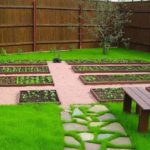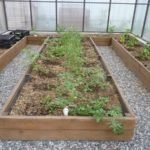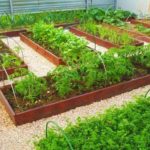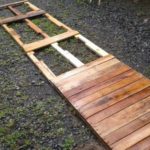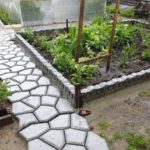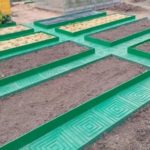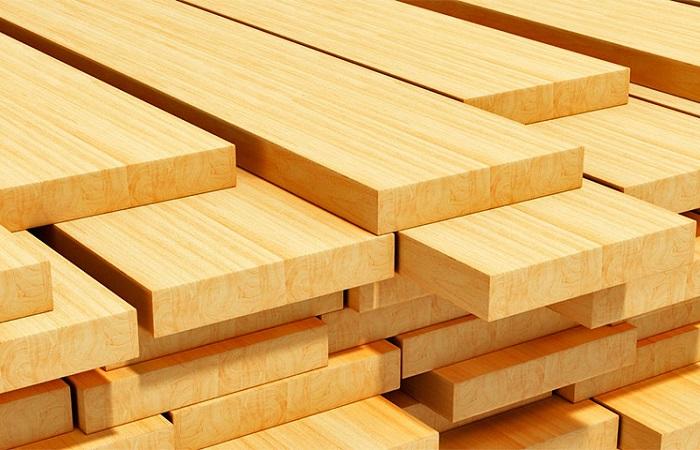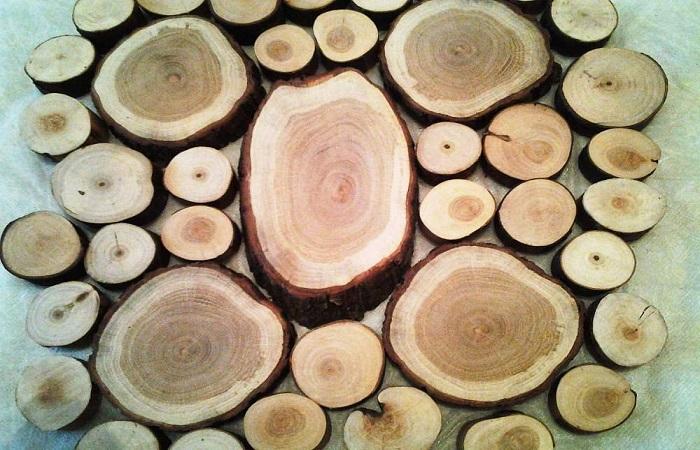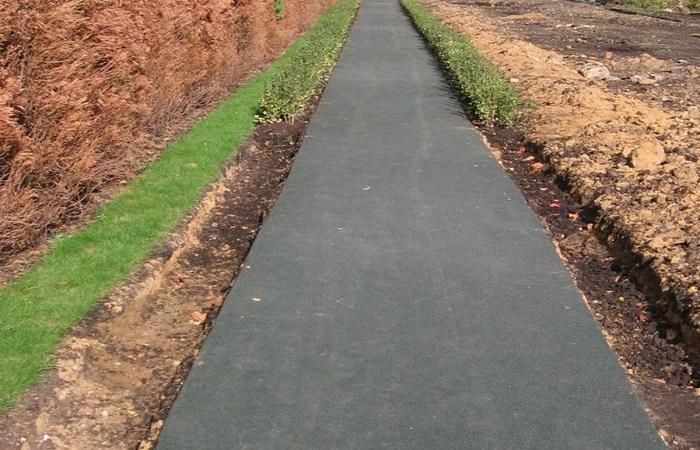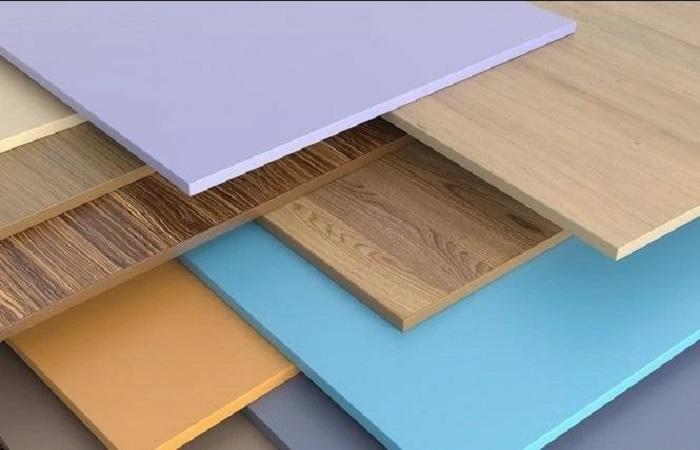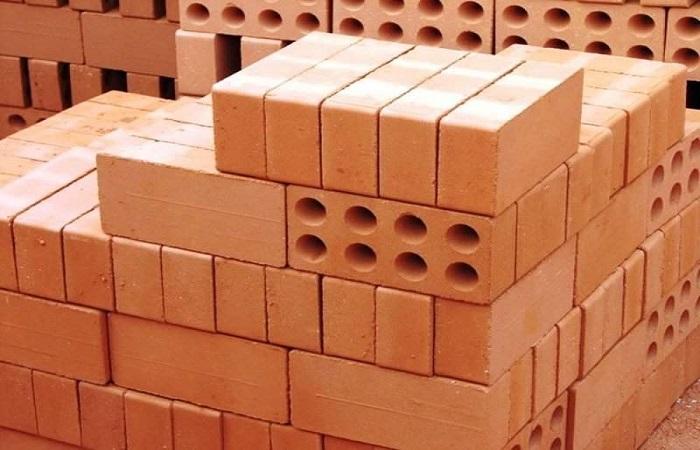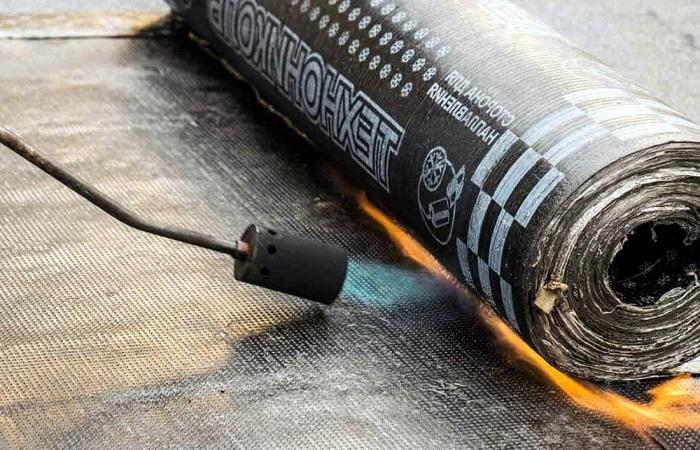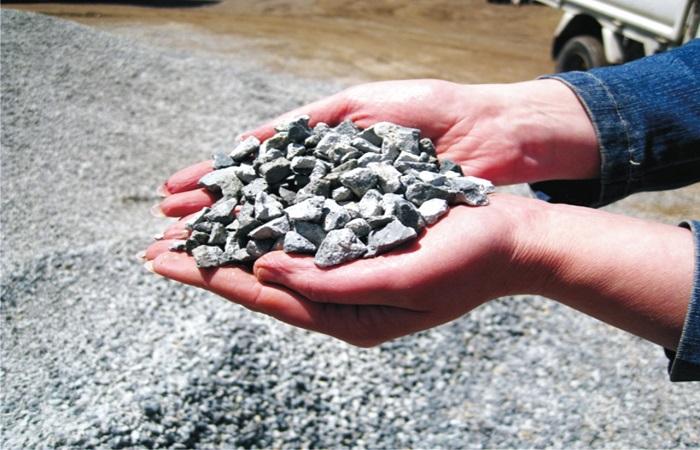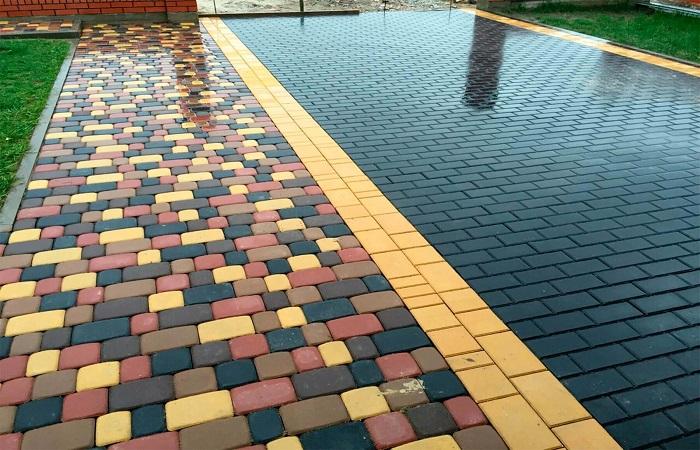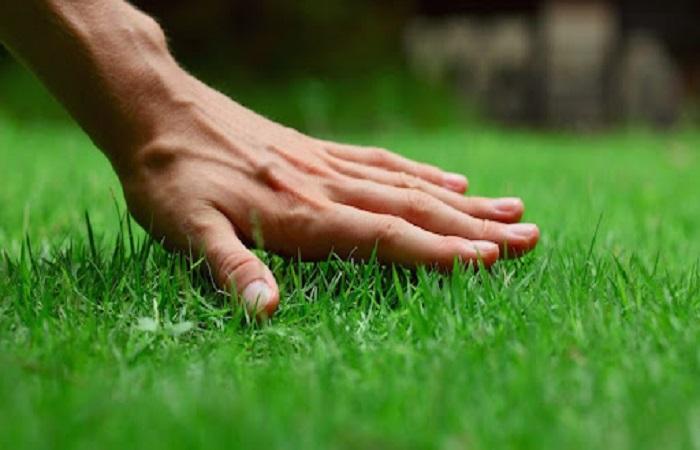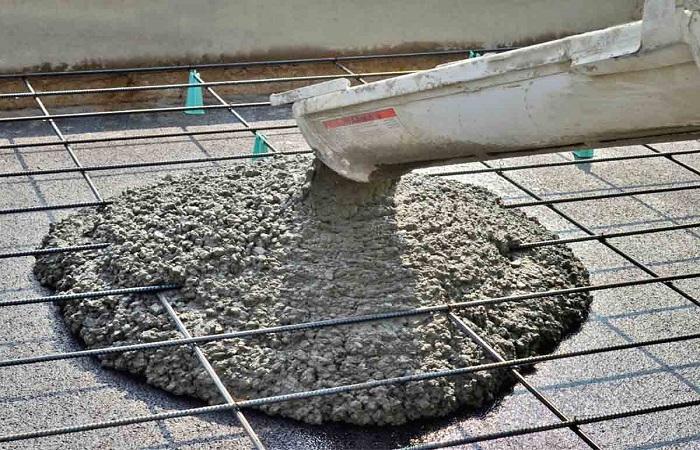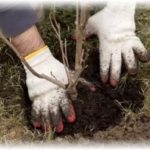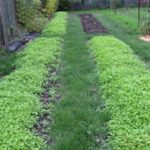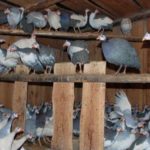Paths between beds on a personal plot are not only a decorative element of garden landscape design, but also a practical necessity. Thanks to the equipped paths, during rainy weather the gardener can move around the site without getting his feet dirty in soggy soil. Before deciding what paths between the beds can be made from, it is worth finding out the advantages and disadvantages of each material and studying the step-by-step instructions for the work.
- Why are paths between beds needed?
- Material selection criteria
- What to cover the paths with?
- Boards
- Tree cuts
- Rubber tracks
- Plastic
- Brick
- Agrofabric
- Ruberoid
- Paths between beds made of crushed stone
- Paving slabs
- Lawn grass
- Concrete
- Waste Application
- From sawdust
- From newspapers and magazines
- From compost
- From the lids
Why are paths between beds needed?
Sooner or later, every owner of a personal plot thinks about creating paths between beds. If cultivated plants are constantly grown in the garden for the purpose of harvesting fruits, then they require constant agrotechnical care, in any weather. However, after rains, the soil underfoot moves away, and carrying out normal procedures brings problems.
If you choose the right material for creating paths in the garden, it will be possible to care for plants in any weather, and the process of arranging paths will not take much time and effort.
According to gardeners, paths between beds allow solving several problems at once:
- Get rid of weeds. Weeds constantly grow on the paths and scatter seeds onto the beds, which is why we have to constantly weed.
- If you remove weeds from paths and leave the soil open, then after it rains, the ground will become soggy and it will be difficult to move between the beds. In addition, dirt stuck to shoes will spread throughout the yard and into utility and living areas.
- Moisture evaporates from open ground much faster, which affects the development of cultivated plants.
- The gardener’s main workplace is the paths between the beds; he moves along them, performing basic agrotechnical procedures. If you create convenient paths, the process of caring for plants will be simplified several times.
- Paths lined with beautiful material create an attractive view of the site in any weather.
Material selection criteria
Before you start arranging paths on your garden plot, you should choose the appropriate material.Each option has its own advantages and disadvantages. If you choose the wrong material, it can harm crop plants and affect the quality and quantity of the harvest.
The surface for paths in the garden must meet the following criteria:
- Environmental safety. The material from which the paths are planned to be made must not contain harmful substances. At the first precipitation, they will penetrate into the soil, and, accordingly, into the plants whose fruits are eaten by humans.
- Resistant to moisture and ultraviolet rays. A coating that easily absorbs water will not last long, and after rain falls it will turn into a shapeless mass underfoot. Also, the material should not allow sunlight to pass through.
- Since paths in the garden are usually laid in the spring, the coating must be resistant to temperature changes and not collapse under the influence of return frosts.
- Strength and durability. If a gardener plans to arrange a covering between the beds for more than one season, purchase high-quality and durable material that will not have to be replaced after winter.
- Breathability. Many owners of personal plots prefer a coating that allows air to pass through, in which case rot will not appear underneath it and biochemical decomposition processes will not occur.
Today, there are different options for materials on sale for the construction of paths between beds, ranging from geotextiles to paving slabs.
What to cover the paths with?
Various materials are used to line paths between garden beds; some will last a long time, while others will have to be replaced every season.
Boards
One of the most affordable materials for paths are wooden boards, which are used to create decking in the garden. The advantage of such a covering is that at the end of the season they are removed from the site and stored in a utility room, and with the arrival of spring they are again placed in the garden.
However, wood is afraid of moisture and quickly becomes unusable under its influence, so the boards are pre-treated with a special water-repellent impregnation. To extend the service life of the coating, it is not laid directly on the ground, but a cushion is placed underneath it so that the boards do not come into contact with the ground. Another disadvantage of this option is that entire colonies of aphids and snails settle under the boards, which subsequently spoil the harvest.
To create a cushion, gravel and sand are used, they are laid out in layers on pre-covered geotextiles and compacted.
Tree cuts
Paths made from wood cuts look original and catchy in the garden, but before laying out the material, it must be properly prepared. Trees such as beech, larch or oak are used for cutting; you can also take coniferous trees, but such paths will last much less, even despite the presence of resin in the material.
Work on creating paths from saw cuts consists of several stages:
- Preparation of materials. Each cut is cleared of bark and the upper part is coated with impregnation, which prevents rotting. The lower cut, which will be in the ground, is treated with bitumen.
- Preparing the trench. Dig a trench that is 15 cm deeper than the height of the wooden cuts. A waterproofing film is placed on the bottom and a layer of gravel is poured.
- Installation of saw cuts.The prepared cuts are placed on a bed of sand or gravel, and the voids between them are sowed with grass or filled with fine gravel.
Rubber tracks
Rubber tracks not only allow you to get rid of weeds, but also have a number of other advantages:
- durability and wear resistance - with proper use, the paths will last up to 10 years;
- non-slippery surface - the material is coated with a special substance, so even after rain your feet will not slip;
- immunity to sunlight and temperature changes;
- absence of puddles - thanks to the special structure, water does not stagnate on the surface, but seeps into the ground.
Rubber tracks are available on sale in rolls and in individual tiles; in the first case, the gardener has the opportunity to independently cut the coating into the fragments he needs.
Plastic
Plastic panels are purchased at the store and laid on a pre-arranged gravel bed. However, some gardeners create paths from plastic bottles between the beds. This method has both pros and cons. The advantage is that you don’t have to spend money on purchasing the material; in addition, the combination of different shades allows you to create an individual design. However, before you start arranging the paths, it is worth considering that the work takes quite a lot of time.
Creating paths from whole plastic bottles is carried out according to the following instructions:
- Using a rope and pegs, mark the boundaries of the future path and dig a trench (with two shovels).
- Formwork is made and the bottom of the trench is covered with geotextiles.
- Pour a layer of sand, lightly moisten it and compact it.
- After this, all bottles are filled with sand and closed with lids.
- The bottles are placed on the pillow in any order, and the voids are filled with cement mortar.
Brick
A material such as brick is characterized by high performance qualities and an affordable price, so it is often used by gardeners for arranging paths in the garden. Bricks are used either whole or crushed into small pieces. However, in the latter case, this will make it difficult to dig up the garden if the owner of the site decides to make a garden bed in place of the path.
Agrofabric
Agrofabric is quite rarely used by gardeners as an independent material for paths between beds. Firstly, it is quite expensive, so you will have to allocate a large sum for the arrangement, and secondly, even despite its relative strength, the structure of the fabric will be damaged with constant walking. Agrofabric is used to create a substrate when arranging paths made of more durable material.
Ruberoid
This material is also used as flooring under the path; it is rarely used as an independent option. However, if the gardener needs to make it easier to approach the beds for a short time, then you can lay out the old sheets of roofing felt that were left on the farm.
Paths between beds made of crushed stone
One of the easiest ways to create paths in the garden is to use small crushed stone. It is scattered in those places where it is planned to move around the site, after first removing the layer of turf.
Paving slabs
If the owner of the site wants to create a durable covering between the beds, you can lay out the paths with paving slabs. It is convenient to move on this coating in any weather, and it also prevents weeds from germinating.However, it is important to properly make a pillow for this material. The bottom of the trench is lined with geotextile, and sand is poured on top, wetting it with water and compacting it.
Lawn grass
Garden paths seeded with lawn grass look aesthetically pleasing, but require constant maintenance, which includes watering and mowing. The cut grass is used for mulching. If you sow the path densely, then most of the weeds will not be able to break through the grass carpet, walking along such paths is convenient, and next season, if necessary, beds can be made in their place.
Concrete
Despite its durability, such material is used extremely rarely in the garden. This is due to the fact that if the gardener wants to redevelop the site, dismantling the paths will take a lot of time and effort. However, concrete also has advantages over other options - low cost, the ability to manufacture any shape and size with appropriate formwork, strength, durability and frost resistance.
Waste Application
If the paths between the beds are created for one season, then it is possible to make do with improvised materials, which will save money.
From sawdust
You can also fill the paths with sawdust, but you must remember that they tend to acidify the soil. It is recommended to let the organic material sit for a year; if it must be used immediately, then treat the sawdust with urea and ash.
From newspapers and magazines
If it is necessary to make paths between the beds, then work begins with weeding the grass. Newspapers are laid on the ground in several layers so that they do not become limp from rain; sand, sawdust or small crushed stone must be poured on top.This material allows you to get rid of weeds, since they will not grow through layers of newspapers. The use of such improvised means makes it possible to inexpensively arrange paths without purchasing additional materials.
From compost
This technique allows you not only to arrange paths, but also to saturate the soil with useful components necessary for plants. First, the weeds are pulled out, and layers of straw, spruce litter, and mown grass are laid on the bare ground. This material is characterized by increased air and water permeability; in addition, worms and beneficial bacteria live in it, which loosen the soil. Even an inexperienced gardener can make paths from compost with his own hands, without the use of special tools.
From the lids
If you use multi-colored caps from plastic bottles for paths, you will not have to spend money on purchasing material; in addition, the paths will serve not only a practical, but also a decorative function.
Geotextiles are laid at the bottom of the trench, and a layer of sand is placed on it. Covers are installed randomly, and the voids between them are filled with fine gravel. It is not recommended to fill the gaps with concrete, as it will be difficult to dismantle it later.

